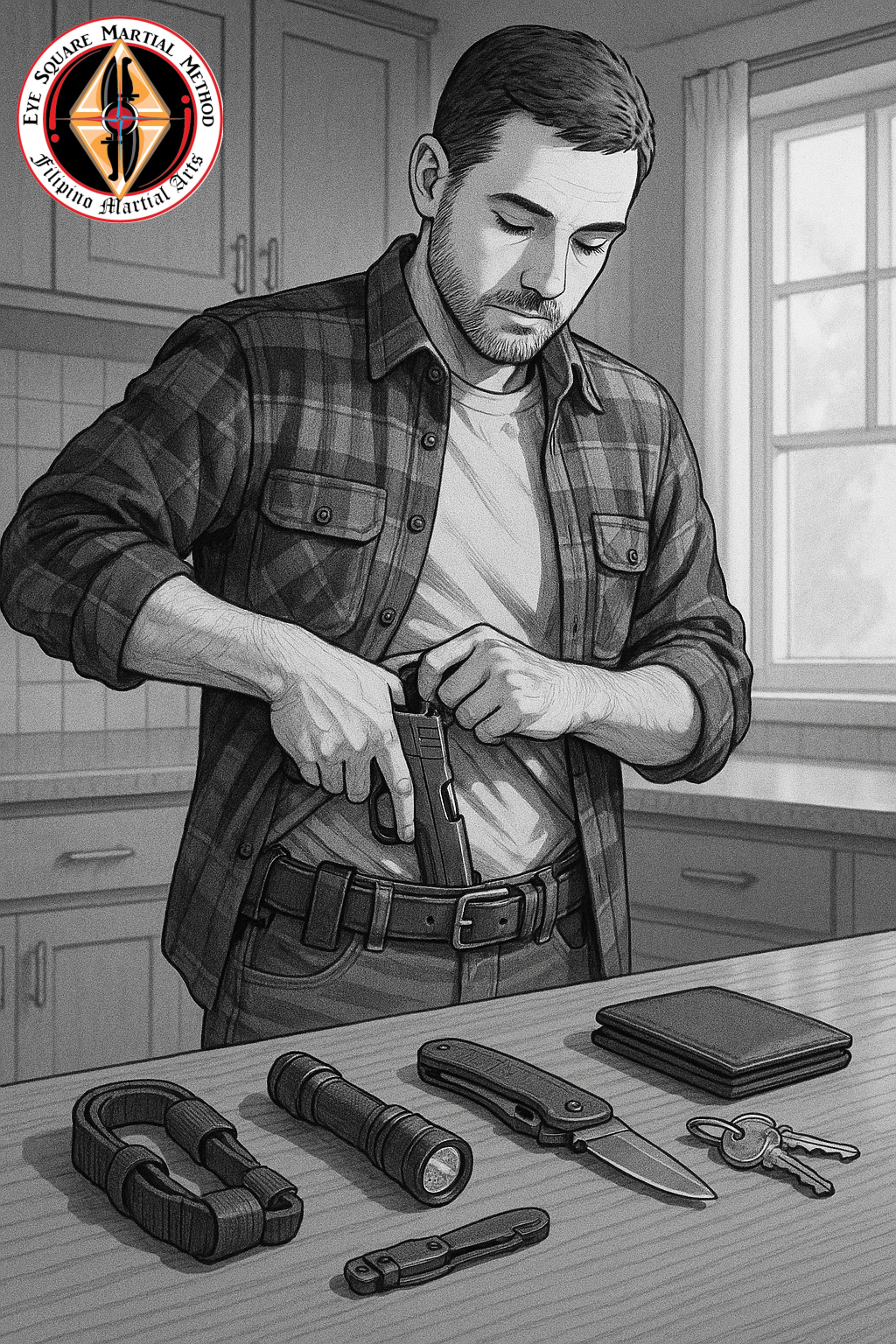So you’ve got your license. You’ve trained. You understand the law. Now what?
Welcome to the part most people gloss over: what it actually takes to carry a firearm daily—safely, comfortably, and legally. It’s not as simple as strapping on a holster and walking out the door.
Legal First, Always
Before you carry, you need to know:
- Your state’s laws (and any you travel through)
- Where carry is prohibited (schools, government buildings, private property with signage)
- What qualifies as brandishing (lifting your shirt and “flashing” your gun can get you charged)
Also—check reciprocity if you carry across state lines. Some states don’t honor your permit.
🛡️ Bottom line: Ignorance of the law is not a defense.
Comfort and Concealment
The best gun in the world is useless if it stays home. That’s why comfort and concealment matter.
Popular carry options:
- Inside-the-waistband (IWB) – common, secure, and easily concealed
- Appendix carry (AIWB) – fast access, but requires training and safety discipline
- Pocket or ankle carry – for small backups, not primary defense
Your clothing, holster, and belt should work together. You shouldn’t be adjusting or printing all day.
EDC Isn’t Just a Gun
Everyday Carry (EDC) should include:
- A quality flashlight
- A tourniquet or compact trauma kit
- A folding or fixed-blade knife
- Phone with emergency contacts and maps
- Optional: spare mag, multitool, pepper spray
Why? Because not every problem is a gun problem.
Situational Readiness
Carrying daily means adopting a new posture toward the world:
- Know your exits in public spaces.
- Sit where you can observe entrances.
- Avoid confrontations. Walk away when you can.
- Practice de-escalation. Your gun is not your voice.
🧠 Mindset tip: You’re not looking for trouble—you’re trained to end it if it finds you.
The Real Test: Can You Access It Under Stress?
It’s one thing to carry. It’s another to draw from concealment in 2 seconds or less when your heart’s racing.
Train for:
- Drawing while seated
- Clearing cover garments
- Engaging multiple threats
- One-handed shooting (injured limb, carrying a child, etc.)
Dry fire drills at home can simulate many of these scenarios—and they cost you nothing but time.
Closing Thought
Everyday carry isn’t about paranoia—it’s about responsibility. It’s about choosing to live prepared, not afraid.
In our final post, we’ll wrap up the Armed Citizen Series with a look at how to defend rights without losing your humanity—and what it means to be a good citizen in a world full of noise.

